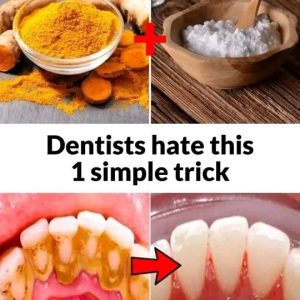Oral cancer is one of the most commonly overlooked cancers because its earliest warning signs often appear subtle, painless, and easy to dismiss. Many people assume that anything inside the mouth must be the result of a minor irritation—perhaps a small bite, a sharp edge on a tooth, a reaction to hot food, or a harmless canker sore that will heal on its own. The mouth is constantly subject to friction, temperature changes, and stress, so it is understandable that most people do not scrutinize every small change. Yet these assumptions are exactly what allow early oral cancer to progress silently. What begins as a small patch, slight discoloration, or mild soreness can evolve into something far more dangerous if ignored. Because oral cancer can develop on the tongue, the gums, the inner cheeks, the floor of the mouth, or the throat, its presentation varies widely. Some signs mimic issues people experience regularly, while others hide in places rarely examined. This is why awareness is crucial: early detection dramatically improves treatment outcomes, and the only way to achieve early detection is to recognize the clues the body gives, even when they seem insignificant.
One of the earliest red flags is a persistent sore or ulcer that doesn’t heal within a typical timeframe. Most minor mouth injuries heal within a week or two because the tissues in the mouth regenerate rapidly. When a spot lingers beyond that—whether on the tongue, cheek lining, lip, or gum—it deserves attention. These sores may be flat or slightly raised, painful or painless, red or pale. Some resemble canker sores but persist long after normal ulcers would have disappeared. Others cause only a faint sense of irritation, barely noticeable unless the tongue touches them directly. In some cases, an individual may not feel any discomfort at all; the only clue might be a tiny patch of roughness or firmness beneath the surface. A non-healing sore can stem from many causes, but its persistence makes it significant. People often attribute these spots to stress, spicy foods, or accidental bites, believing they will heal eventually. But when healing does not occur, it signals that something more complex may be affecting the tissue. The key is not to panic, but to avoid assuming that time alone will resolve the issue. The difference between a harmless sore and something more serious often lies in how long it has been present, not how painful it feels.
Changes in color or texture inside the mouth also play a major role in early detection. Oral cancer does not always present as a dramatic lesion; sometimes it appears as a patch of whiteness (leukoplakia), redness (erythroplakia), or mixed red-and-white areas. These patches do not wipe off like those caused by yeast infections. Instead, they adhere firmly to the tissue and may feel thick, velvety, or slightly raised. White patches are more common and often benign, but certain patterns raise concern, especially those with irregular borders or those that persist despite removing irritants such as tobacco or alcohol. Red patches are more worrisome because they contain fewer keratinized cells and are more biologically active. Even subtle discoloration that seems harmless—a cloudy area on the inside of the cheek, a faint redness under the tongue, or a pale spot on the gumline—should be monitored. Texture is equally important: roughness, hardening, or thickening of a tissue area may indicate cellular changes. Because the mouth is rarely examined closely, these changes often go unnoticed until they become more pronounced. Establishing a habit of checking the mouth—similar to skin checks—can help catch these signs before they advance.
Another silent indicator involves lumps, swellings, or unusual masses that do not resolve. These may appear on the tongue, floor of the mouth, jawline, neck, or gums. Some are visible, while others are felt only when pressing gently along the mouth or jaw. A small lump beneath the surface may feel like a hardened pea or a firm ridge. Lumps in the neck—often mistaken for swollen lymph nodes caused by a cold—can be early signals when they persist without obvious cause. These swellings may be painless, which contributes to their being ignored. Some individuals notice a change only when chewing becomes slightly uncomfortable or when the tongue rubs against something unfamiliar. Any new lump or thickening that lasts more than two or three weeks should be evaluated professionally. Not every lump is dangerous; many come from infections, blocked salivary glands, or benign growths. Still, persistence is the critical factor. The challenge is that lumps can form in concealed places, especially under the tongue or along the inner jawline, where people rarely look. This makes routine dental visits and self-examination essential for catching abnormalities early.
Difficulty moving the tongue, speaking clearly, chewing, or swallowing is another early warning sign that often goes misunderstood. People frequently blame temporary soreness, sinus congestion, acid reflux, or allergies for these symptoms, unaware that tumors—especially those at the base of the tongue or near the throat—can cause restrictions long before pain appears. A feeling of something “stuck” in the throat, even when there is nothing there, can be an early indication of deeper tissue involvement. In some cases, individuals experience unexplained numbness or tingling in parts of the mouth. Numbness is particularly concerning because it signals possible nerve involvement. A shift in how the teeth fit together, dentures that suddenly feel uncomfortable, or a change in bite alignment can also signal underlying structural changes. These symptoms can be subtle, and because they often fluctuate, many people dismiss them as temporary. Yet these warning signs often emerge early in the disease process. Recognizing them requires paying attention not only to pain—which may be absent—but to function. The ability to articulate words, swallow smoothly, or move the tongue freely should remain consistent; changes in these abilities warrant evaluation.
The final, often overlooked category of early signs involves unexplained bleeding, persistent sore throats, and chronic hoarseness. Occasional bleeding from aggressive brushing or biting the cheek is normal, but bleeding without clear cause is not. A sore throat that lingers beyond a typical viral infection, particularly one isolated to one side of the throat, can indicate irritation deeper within the tissues. Hoarseness may result from many benign issues, but when persistent—especially in someone with risk factors such as smoking or heavy alcohol use—it deserves attention. Even breath odor can change due to abnormal cell growth, though this sign is subtle and usually not the first noticed. Together, these symptoms underscore an important truth: oral cancer rarely announces itself with loud, unmistakable symptoms at the beginning. Instead, it communicates quietly, through small changes that accumulate over time. People who understand these signs are far more likely to recognize something unusual before the disease progresses.
Ultimately, awareness is the most powerful tool for early detection. Oral cancer does not discriminate; it affects people with and without traditional risk factors, including those who have never smoked, rarely drink, or maintain good oral hygiene. While lifestyle choices influence risk, biology, genetics, and environmental exposure also play roles. That makes routine observation essential for everyone. Checking the mouth monthly—looking under the tongue, along the gums, inside the cheeks, at the roof of the mouth, and the throat area—can reveal changes that otherwise remain hidden. Dental professionals are trained to spot early abnormalities, which is why regular visits are more than cosmetic—they are lifesaving. No one should jump to conclusions when spotting a mouth change, but no one should assume every issue is harmless either. Early identification allows for early treatment, which dramatically increases survival rates and reduces the need for invasive procedures. By learning what to look for and when to act, individuals protect themselves through vigilance, knowledge, and the understanding that health often depends on noticing what initially seems invisible. When it comes to oral cancer, the greatest danger is ignorance—and the greatest protection





